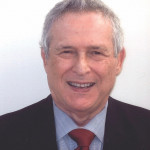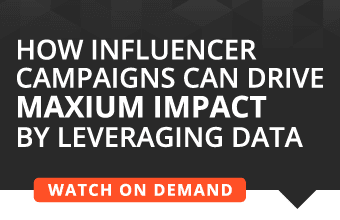As the Super Bowl and Beijing Olympics nears early in 2022, the sports reports will be filled with glorifying past and present “heroes.” But during my long career when selecting athletes as brand publicity spokespersons, I much preferred using athletes who have not been in the media spotlight for several, or many, years instead of using the current “heroes” of the day.
Because of my background of being a sports writer, and for many years being the sports marketing guru for 10 years at Advance Public Relations, (which closed shop when the owner died), and even longer at Burson-Marsteller, clients were often surprised because of what I said regarding using athletes as publicity spokespersons: “A well-crafted program, supervised by a savvy publicist can get you safer and as much major media coverage at a much lower cost than only considering a current star of the day.”
Two recent examples of why clients should not only consider the stars of the day occurred during the recent past:
Naomi Osaka, the four-time tennis champion, dropped out of the French Open because she wanted to skip press conferences, claiming mental health issues. Also claiming mental health concerns was gymnastic superstar and Olympic gymnastics champion Simone Biles, when she dropped out of competition at the 2020 Tokyo Olympics.
But there was a big difference in the attitudes of other athletes after Osaka and Biles’ decisions. Some tennis players criticized Ms. Osaka, saying that the sport needed the media exposure.
In Ms. Biles’ case, she said she was dropping out because she didn’t want to hurt her team’s chances of winning a medal and remained during the competition, cheering on her teammates. And her teammates supported her. One, Jordan Chiles said, reported in the Associated Press, “This medal is definitely for Biles. If it wasn’t for her, we wouldn’t be here where we are right now. We wouldn’t be a silver medalist because of who she is as a person.” “Kudos to you girl,” Chiles told Biles. “This is all for you.”
Perhaps, when withdrawing from competition, Ms. Biles made the most sagacious remark ever by an athlete saying, “At the end of the day, we’re human, too, so we have to protect our mind and our body rather than just go out there and do what the world wants us to do.”
In both cases, most of Ms. Osaka’s and Ms. Biles’ sponsors publicly supported their athlete’s decision
But unlike the unified support given to Ms. Biles by gymnasts, Ms. Osaka’s decision to avoid the press was criticized by other elite tennis players, including 13-time French Open champion Rafael Nadal and No. 1-ranked woman player Ashleigh Barty, who said they respect Osaka’s right to take a stance but they consider speaking to reporters part of the job. Ms. Barty said, in part, “We know what we sign up for as professional tennis players.”
One of the reasons Ms. Osaka gave for not wanting to do press interviews was that sitting for press conferences means answering questions that seed doubt in her mind or breaking down in front of a captive audience after a loss. “I believe the whole situation is kicking a person while they’re down and I don’t understand the reasoning behind it,” Osaka said. While as a former sports writer I don’t entirely agree with her statement, it’s understandable to me why she feels that way.
But their sponsors couldn’t have been happy, regardless of what Osaka and Biles said. A main reason for a sponsor to connect with an athlete is the hope that media coverage on and off the playing field and during press conferences will identify them with the sponsor’s products and TV coverage will show the athletes wearing or using sponsor’s products.
My history of using athletes shows that there is an alternative to using current athletes as publicity spokespersons that is often overlooked: Retired athletes.
Before during and after my tenure at B-M, my sports marketing resume included managing or playing key roles on many sports marketing flag-ship projects: the General Electric sponsorship of the baseball demonstration sport at the 1984 Los Angeles Olympic Games, the Gillette fan balloting for baseball’s All-Star Game for eight years, traveling the world as a strategist with Korean and Australian Olympic and government officials, plus being the key person working with the media for those projects, managing the U.S. Olympic Committee account, speaking at an International Olympic Committee sports press seminar, being sent to Barcelona by Coca-Cola on a special creative media assignment for the 1992 Summer Olympics, and working on sports-related projects for Liberty Mutual and Andersen Consulting, and other corporations, in addition to managing the Schaefer Circle of Sports publicity account for ten years.
Based on my years of experience, below is what I told clients about current and retired athletes when discussing them as spokespersons:
- Using current athletes for publicity purposes, while sexy, can be troublesome—given the frequent news stories about substance abuse, spousal abuse and other troubles of current athletes that are frequently in the news.
- If you want to use an athlete for publicity purposes, don’t select one who is so news worthy that the individual becomes the story at the expense of your message points. You don’t want an athlete who always talks politics or is famous for one unforgettable moment.
- Beware of athletes identified with other products, even those not in competition with your product. Your message loses creditability with the media when your spokesperson has more endorsements than companies listed on the New York Stock Exchange. It’s easier to get product identification in a story when an athlete is associated with only one product.
- Relax if your first choice of spokesperson (and even your second, third, fourth or fifth) is not available or affordable. As your mother might have told you when an early romance went sour, there are plenty of fish in the sea. This is true, at least when choosing an athlete as spokesperson.
- Arranging name interviews for an athlete to talk sports is not that difficult. But all the publicity hits in the world doesn’t do you any good without message points being included.
- Current athletes are seen by media all during their playing seasons and reporters prefer to speak to them about contemporary sports issues.
- Retired athletes are frequently not available to the media; they provide fresh copy and can tell stories about the old days and nostalgia is a big part of sports coverage.
- Most retired athletes are unlikely to be tied to another sponsor.
- Many current athletes are wary of the media and are guarded during interviews; retired athletes are often glad of again being recognized and are expansive during interviews.
- Because of their huge salaries, current athletes demand fees that many clients cannot afford. Retired athletes, many of whom played before big paydays, often are more reasonable about money and are not budget breakers.
- Current athletes are difficult to schedule for publicity appearances because of their travel schedule. That’s not a problem, with retired athletes.
Also, a significant reason that I favor retired athletes is because it’s easy to determine if they have passed the “no unsportsmanlike conduct test”
They are less likely to end up in stories that can be covered by either police or sports reporters, unlike too many active athletes who are tainted with steroids abuse or worse, criminal charges.
An equally important reason that I prefer retired athletes is because the media knows they are being offered for interviews for a specific commercial reason and, thus, the athlete is given more latitude when working in the client’s message points. (If I were a client, my first question to the PR exec after an interview would be, “where are my messages points.”) An interview limiting client mention to, “is a spokesperson for…etc.,” with no message points might satisfy the PR exec, but what good does it do the client? It does no good, in my opinion.
A few of my favorite retired athlete spokespersons were Robin Roberts, Bob Feller, Ralph Kiner, Monte Irvin, all Hall of Fame baseball players, and Bob Mathias an Olympic champion. They all had the same traits in common: Easy to work with, cooperative, good reputations with the media, good story tellers and reliable. If they said, “I’ll be there at 2 p.m.,” they were always there. Sparky Anderson, the baseball manager, was a favorite for programs that called for someone still active in sports.
Of course, the growing importance of new media techniques, like social media, has made it more important than ever that agencies are not “star struck” when recommending an athlete as a publicity spokesperson. Athlete spokespersons must be both corporate and media savvy, and have an untarnished reputation. We all know of instances where athletes have received negative news coverage because of statements or tweeted messages that clients would not have approved of. This is most likely to happen with current athletes.
Retired athletes should not be ruled out just because they haven’t been an active player for some time. There are many positive reasons to offer the media a star who hasn’t been available for interviews for many years. All good ones.








